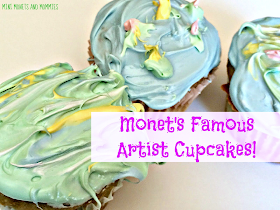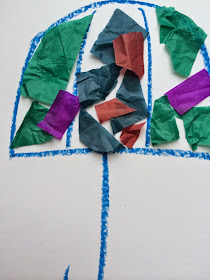So, working with lead and real glass won’t cut it
when it comes to crafting safety with your young child. That said, your young
artist can still make a “stained glass” masterpiece of her own. There are two
ways that I like to create this faux stained glass project: 1. Using clear
acetate (or another clear sheet) and markers, and 2. Using plexi-glass, markers
and paints. For simplicity’s sake, this time I’m going to describe how to make
the acetate and markers version. Please check back in the (hopefully) near
future to see how to do the more complex plexi version.
·
Clear acetate sheets- I recommend
getting several (or an entire box), as the first attempt may be more of a
practice round for your child. If you don’t want to splurge on the acetate, you
can do what I did – use a clear, flexible plastic photo or file holder (the
kind that went into your high school binder).
·
Markers- I know, no one wants to use
permanent markers with little kids. After all, who really wants a Sharpie line
drawn down the center of your kitchen table forever? But, as you will see, the
acetate’s slick surface and washable markers don’t mix. You’re likely to get a
smeary mess (but, that can be fun too!).
·
Poster board or card stock
·
Scissors
·
Clear tape
·
Clear drying school glue
What You’ll Need To Do:
1. Choose
a subject. Make it simple. Your child should be able to draw it only using
outlines.
2. If
you’re using a photo/file holder (like I did), cut it in half on the fold.
3. Have
your child draw the outline of her design onto the clear plastic sheet with a
black permanent marker.
4. Using
bright or bold colors, your child can fill in her design.
5. Press
another piece of acetate (or the other half of the file holder) on top of the
drawing. This will protect it and help to keep the marker from smearing on the
window.
6. Tape
the edges of the plastic together.
7. Make
a frame. Although I do believe that the kiddos should do all of their artwork
themselves, they may need some help with this step. Place the faux stained
glass art onto a poster-sized piece of card stock or poster board (makes sense
if you’re going for poster-sized). Cut the board so that you have at least a
two inch border on the bottom and sides. The top should be long enough to fold
all of the way over the artwork and go to the bottom (it should look like a
tent).
8. Fold
the poster board in half.
9. Draw
a window that is slightly smaller than the acetate/plastic stained glass art
onto the front of the poster board tent. Cut this out (you will need to help
your child do this step, as it involves poking the scissors through the board).
10. Trace
the window onto the other side of the poster board tent and cut it out.
11. Place
the “stained glass” into the middle of the frame, taping it in place.
12. Tape
or glue the frame together and display it on a window.
Your child can add on to this project by decorating
the frame with markers, crayons, stickers, paints or anything else that she can
think up. When you display the artwork on your window, be careful not to do
anything that will destroy the glass. I used tape to hang this one up, but that
may leave behind a sticky residue. You can also prop it up against the window
sill.

















.JPG)













.png)








.JPG)





